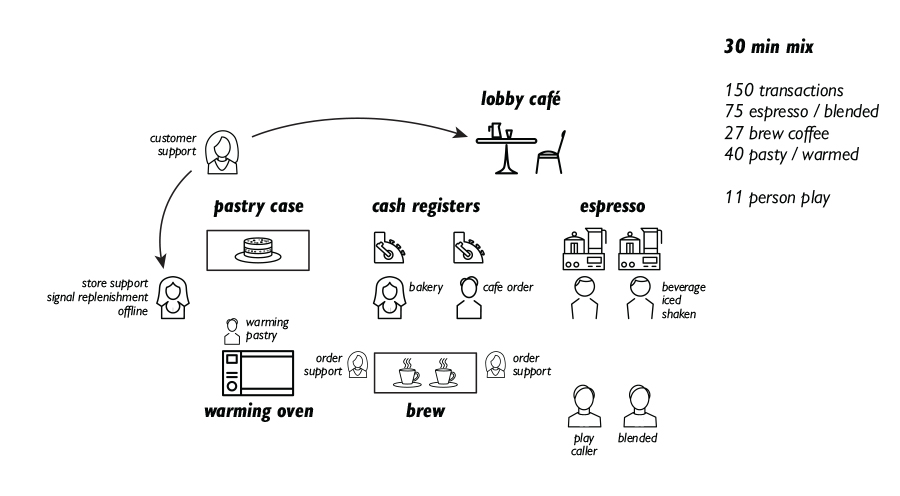Karen Gaudet has written Steady Work (!), a wonderful new book about her experience as a regional director of operations for Starbucks Coffee Company. With generosity and grace, she shares how she learned to practice lean thinking during a challenging time for the company, how she developed a detailed understanding of the WORK that enabled her store teams to better handle the peaks and valleys of retail, and how lean thinking and steady work brought a modicum of comfort to a community in crisis.
You may be asking, “What could the work of a coffee shop possibly have to do with a community in crisis?” Karen has a certain understanding of work – that which someone does, acts upon, transforms, to create value for someone else. Motion, she has learned, does not equal work. In fact, by this definition most of our motions are wasteful, i.e. unnecessary and creating no value from a customer’s perspective. Identifying motions that are value creating from those that are wasteful requires us to ask, “What is the value to be created here and now?”
In a coffee shop, on a normal day, it’s a fresh and flavorful handcrafted drink that’s delivered in a timely way. It’s also a perfectly paired pastry, a clean and clear pathway through a store, and a warm and welcoming smile from a friendly-looking face. All of this makes it a deeply human experience – created by one, for another.
Yet often it’s anything but, even on a normal day. “Handcrafted” becomes a euphemism for inconsistent quality. Fresh and flavorful is actually cold and stale. Pathways are littered with obstacles. Faces reveal frustration, if they can be seen at all. Why? Karen’s first of “Nine Lessons to Share” is “go see” the work. There, at the gemba, is where you can start answering that question. She goes on to explain how “standardization can set us free” by making the routine work of the hands simple and repeatable, enabling the mind to focus on the more challenging (and rewarding) creative work.

Eleven person play at Newtown, CT Starbucks
December 14, 2012, however, was not a normal day for the people who lived and worked in and around Newtown, Connecticut. On that day and the days that followed, people filled up Karen’s coffee shops looking for more than cups of coffee. The work changed, based on the value to create there and then. Coffee was still brewed. Pastries were still served. Floors were still swept. But that was not enough. Creativity and humanity were desperately needed, replacing simple and transactional smiles and thank yous. Everyone, from the community member to the national news reporter to the baristas themselves needed shoulders to cry on, ears to listen, and eyes to connect with for as long as it took.
Thankfully for Karen and her team, the work of a normal day had been made steady through the application of lean thinking. Routines were in use. Roles and responsibilities were clear. Plays (and audibles) were designed and practiced. And through making their work steady, she and her team learned to solve problems through their work, even, especially, when things changed. Like happened every day when the peak of a morning rush became the lull of an early afternoon, or every summer when hot espresso drinks were replaced by cold blended beverages. Or, like happened on a cold December morning.
By telling her story Karen shows us the power of lean thinking for any situation, even those that are the most extreme. That this is Karen’s experience explains why she, along with so many others, works so hard to try instilling lean thinking into every human endeavor. Which leads me to promote her book. Because although she’s a dear friend who I worked with at Starbucks and I work with now at LEI, I sincerely believe that her story can inspire people who are unfamiliar with or hesitant to try lean thinking for whatever reason to give it a go. I hope that you’ll read her book and share it with everyone you know.
Together, we can spread the message of Steady Work for when, and as, things change.
Josh
Josh Howell
President, Lean Enterprise Institute
Boston, Massachusetts






